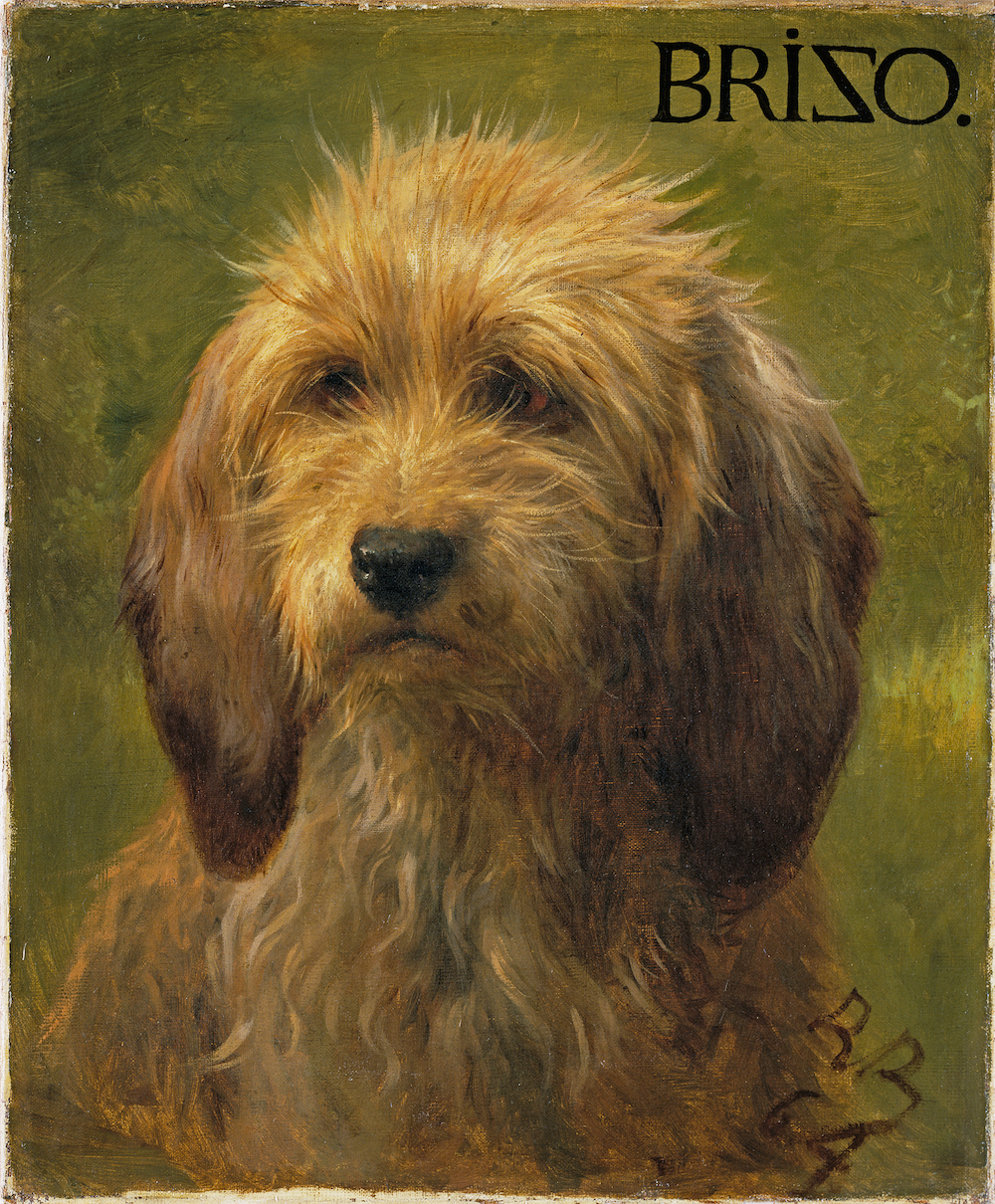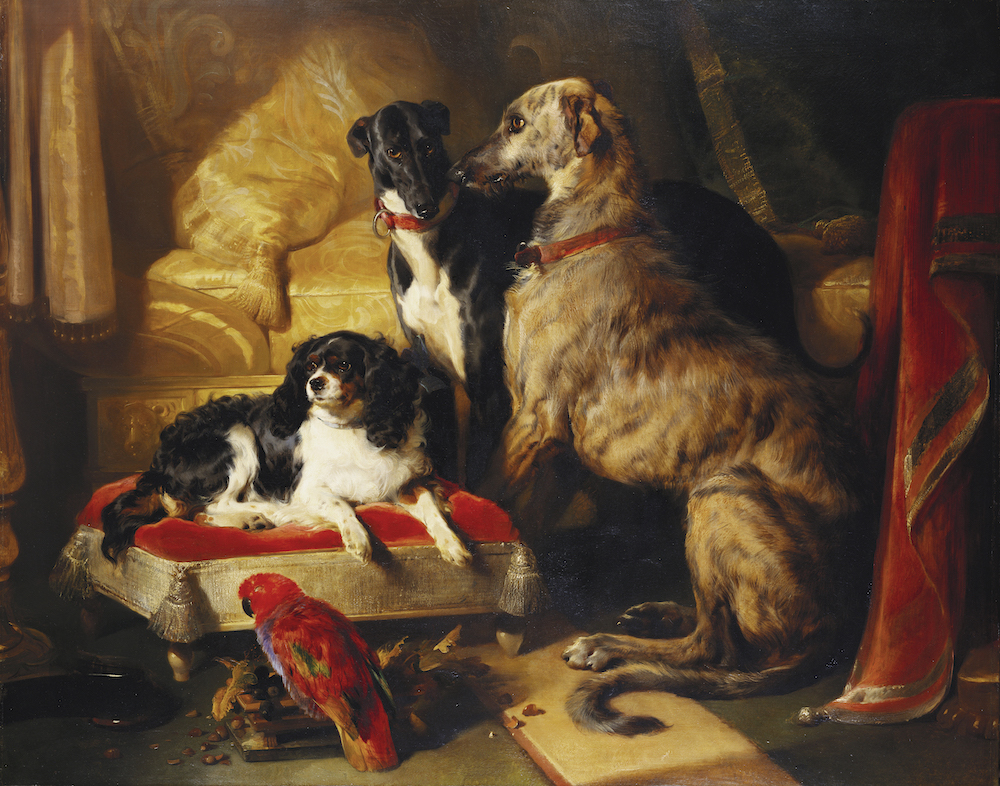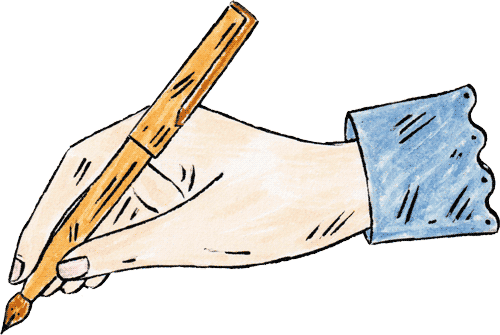Portraits of Dogs: From Gainsborough to Hockney
It’s no secret in these parts that I, along with many friends and colleagues in the world of design, have a love of dogs. So it was with particular pleasure that I learned the Wallace Collection in London had finally opening their marvelous new canine-centric exhibit, postponed from 2020 due, of course, to the pandemic.
Portraits of Dogs: From Gainsborough to Hockney explores our devotion to four-legged friends across the centuries. Through carefully selected paintings, sculptures, drawings, works of art and even taxidermy, the exhibition highlights the unique bond between humans and their canine companions. Dog portraiture developed as an artistic genre contemporaneously with its human counterpart – dogs are represented in the earliest cave paintings alongside humans – and it flourished, particularly in Britain, from the seventeenth century onwards.

More than any other nationality perhaps, the British have both commissioned and collected portraits of dogs – hence Susanna’s and my book At Home in the English Countryside: Designers and Their Dogs. This penchant was a guiding principle in selecting artworks for the exhibition, with nearly all loans coming from collections in the United Kingdom. Works were also deliberately chosen for their lack of human presence. Despite this absence, the commissioned portraits reveal as much about the owners as they do about the dogs themselves, the personality of the owner reflected in the character of their beloved pet.

In assembling this exhibition, the Wallace Collection’s Director, Dr Xavier Bray – himself the proud owner of two pugs Bluebell and her son, Winston – was fortunate to have an abundance of examples from which to choose: “The idea of curating an exhibition of dog portraiture has been in the pipeline for a long time and, fortunately, the Wallace Collection lends itself perfectly to the staging of such an exhibition. Two of our most popular paintings are seminal dog portraits, Rosa Bonheur’s Brizo, A Shepherd’s Dog (1864) (below)

and Edwin Landseer’s Doubtful Crumbs (1858–9).

They represent two very contrasting approaches to the art of dog portraiture. Bonheur’s portrait is a superbly lifelike and intimate portrayal of her French otterhound, Brizo. In fact, Bonheur was a highly successful artist during her lifetime – an exceptional achievement for a woman in a male-dominated artworld. Learn more about her below.
By contrast, Landseer is more interested in introducing a biblical parable into his portrayal, exemplifying the 19th century urge to moralize through dog portraiture. In his work, a small street terrier waits for the ‘crumbs’ from the St Bernard who falls asleep while feasting in his warm kennel – a Victorian moral of the rewards that await in heaven for the meek amongst us.” Bringing over 50 works of art to Hertford House, Portraits of Dogs presents a broad range of portraiture showing dogs in all their different shapes and sizes, with each painter or sculptor challenging themselves how best to represent mankind’s best, faithful and fearless friend.

The earliest example is a late first-century Roman marble sculpture of two greyhounds, on loan from the British Museum, above. Known as the Townley Greyhounds, it depicts an emotional connection between the pair – which is perhaps surprising given its early date – and is possibly the earliest representation of the ‘Vertragus’ dog, a Celtic breed thought to be the antecedent of the greyhound and greatly prized by the Romans for their prowess as sighthounds.

The connection between dogs and royalty also forms a key part of the exhibition, not least Queen Victoria’s love for spaniels. From a touching portrait of her Sussex spaniel, Tilco, painted by Landseer in 1838 (National Trust), above, to pencil and watercolor sketches she made of her other dogs (Royal Collection Trust). There’s even a free one-room display celebrating the unique connection Queen Elizabeth had with her corgis. And just as Queen Victoria sketching her beloved pets on an amateur basis, professional artists have also depicted their own pooches and those of their closest friends and the exhibition presents some charming examples, from Thomas Gainsborough’s Tristram and Fox, dated c. 1775–85 (Tate), below

which hung over the fireplace of the artist’s home, to James Ward’s Portrait of Fanny, A Favourite Dog, dated 1822 (Sir John Soane’s Museum), below.

Finally, a suite of vivid paintings from 1995 share a series of affectionate vignettes of David Hockney’s dachshunds, Stanley and Boodgie. They are a touching testament to the role the dogs played in his life from the moment he adopted them in 1987. By portraying the two dogs sleeping, or at rest on their vibrantly coloured cushion, Hockney creates a strong sense of intimacy and immediacy.

There are a couple talks associated with the show one can attend, either in person if you happen to be in London, or via Zoom. You can join Xavier Bray, Director of the Wallace Collection, and Alexander Collins, Assistant Curator for Portraits of Dogs, as they share their insights into the exhibition and explore the development of dog portraiture across the centuries. You’ll find out more about the particularities of dog portraiture, the key themes of the exhibition and fascinating facts about some of the exhibits. Also discover some of the ideas that helped to shape the selection process and what was involved in the curating of the exhibition. Tickets here.

You can also join Charlotte Gere, a leading specialist in 19th-century art, and Alexander Collins, Assistant Curator for Portraits of Dogs, as they discuss the British Royal Family’s affection for dogs across the centuries, with a particular focus on Queen Victoria and Prince Albert. Tickets here
The exhibition is accompanied by a lavishly illustrated 155-page catalogue, which you can order: Faithful and Fearless: Portraits of Dogs.


I love that you posted about this. I have had this on my list for a trip over in June. One of my favorite museums.
Happy Easter!
Oh lucky you that you will see in person!